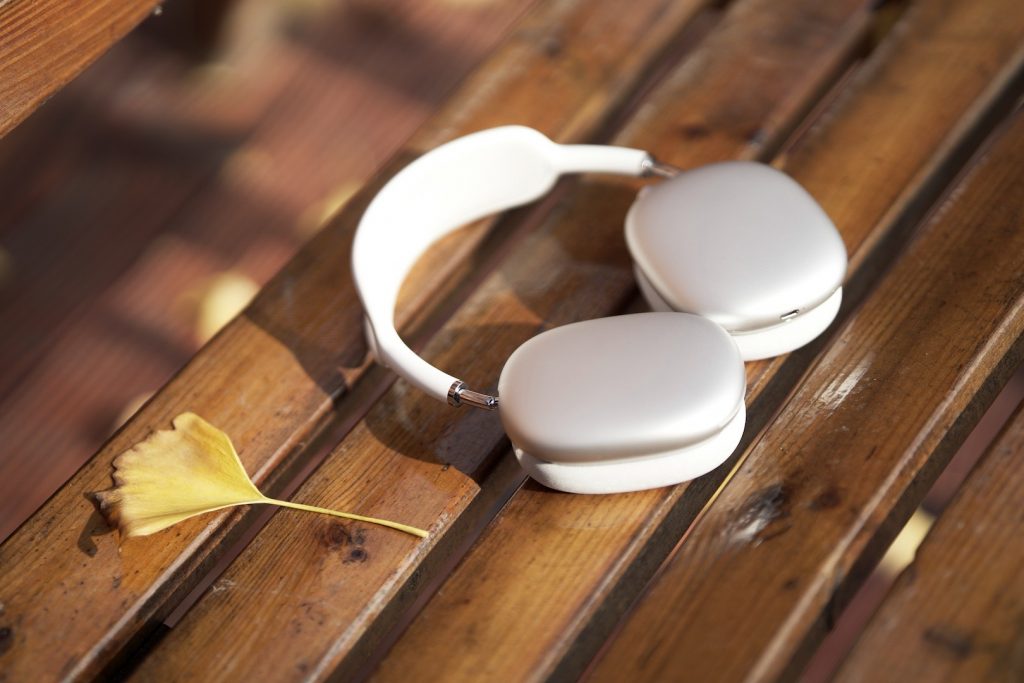
I had planned to use my desktop device to drive the Airpods Max over the weekend and have a good PK with my big headphones, but after a brief listen just now I don’t think I need to, so I’ll forget about it after a brief finish.
HIFI Special
Verdict: Sound quality about 100
Audio source: Spotify + regular Windows laptop + Lighting-3.5mm adapter cable
Comparison: HIFIMAN RE800 Silver
I was away on a business trip and borrowed a RE800 Silver from a colleague for a quick AB, in fact I passed this plug on to a colleague so I’m familiar with it.
The RE800 Silver was positioned as a secondary product to HIFIMAN’s sub-flagship model, a standard “mid-range” position. The RE800 Silver has very good resolution, explosive mid and high frequencies, accurate and “good sounding”. For a long time my opinion of it was that it was the HIFI entry point, the way it should sound for $1000.
I chose Spotify and a computer integrated sound card because of the limitations at hand and to minimise the advantages of the RE800.
The first reaction to the sound with the Airpods Max wired is that it’s flat, with no burst of power in the various frequency bands and generally adequate resolution. The Airpods Max are more like an optimised, amplified version of Apple’s flavour, a bigger bowl of plain water. After switching to the RE800 Silver Simple AB, I was even more convinced that, sorry to say, the Airpods Max don’t sound good. Nevertheless, the basic quality is there, and the soundstage is moderate and accurately positioned for listening to large and small compilations. On the basis that the RE800’s sound is worth $1000, I would consider this sound to be worth about $100.
As active noise-cancelling Bluetooth Big Ears
In the Airpods Max category of active noise-cancelling Bluetooth Big Ears, I have used the QC35, QC35II, WH-1000XM2 and WH-1000XM3 for a long time.
Sound quality
Although the sound resolution drops a little when the Airpods Max switch to Bluetooth, its overall performance is significantly better than that of the Bose and Sony products. the QC35II and XM3 are only loud for me, with no detail and very hard to listen to. By the same standards as above, they are about $100 better sound quality.
Noise reduction and transparency
Having used the NC700 and WH-1000XM4 for a short time, the Airpods Max noise cancellation level is slightly better than negligible, based on impressions without the AB. The pass-through mode is a traditional Apple strength, and it’s a no-brainer.
Comfort
The most important thing for active noise-cancelling Bluetooth Big Ears is comfort. On a scale of QC35 out of 100, I’d say the XM3 scores 90, while the Airpods Max only score 60. Heavy! Very heavy! Heavy in the sense that you feel the pressure when you walk! A deadly amount of weight for a silly luxury feel. The ear cups are soft to a good degree, but even in winter they feel a bit stuffy. This feeling may be related to the weight and I don’t know if they will stand up to the test of an air-conditioned summer room (without having to think about going out). The overhead dome mesh design has no downward pressure, but the earcups feel tight with a lot of inward pressure. Guessing that a large part of the weight is transferred to the ears, rather than the headband. I’ve been wearing them for an hour or so now and they already feel uncomfortable, bearing in mind that I often wear the QC35 for 8 hours at a time and consider my ears to be well-worn and not delicate.
Design
The aluminium profile is silly, the dome mesh headband is creative but the effect is to be considered, and the removable earcups are full marks. If it were a HiFi headset, I’d be willing to pay an extra $1,000 for the convenient and cool removable ear cups – after all, it’s not unusual for a HiFi headset to last five or ten years, and ear cups are a consumable item. But with Apple’s products, which should be new in two years’ time, their existence is much less relevant.
During the period when the Bose QC35 and Sony WH series were competing, I repeatedly jumped across the two and eventually decided that the QC35 was the king of active noise cancelling Bluetooth headphones. The reasoning at the time was that “the QC35’s toggle power switch, clear physical operating buttons and the ability to connect two devices at once are all really useful designs. Whereas the cool and user-friendly looking features (gestures) of the 1000XM3 were not used a few times.”
But today, the Bose’s strengths are reduced to comfort and price. Active noise cancellation is being caught up or even surpassed by both; physical buttons still trump Sony, but Apple’s multi-sensor + never switch off idea is more desirable; dual-device connectivity, which Sony finally had by the XM4 and Apple finally had by iOS 14. It’s funny to say that it took Apple and Sony years to support such a basic feature, but we can only blame Bose for leaving too much time to the enemy.
Is it worth buying?
For $200, you can have the less noise-cancelling but best-in-class comfort and practicality QC35II, the best value active noise-cancelling Bluetooth headphones. For $2,000, you can also go for the NC700 and XM4, which are in the top tier of noise cancellation and not too bad. $4,000 for the Airpods Max isn’t worth that much, but you could consider them for a subsequent price drop to $3,000. It would probably suit people who
like the seamless switching experience of the Apple family
Don’t use their Bluetooth headphones for more than 2 hours a day
Regularly watch movies or shows on iPad that support spatial audio
(Possible future support) multimedia headphones for Apple TV


